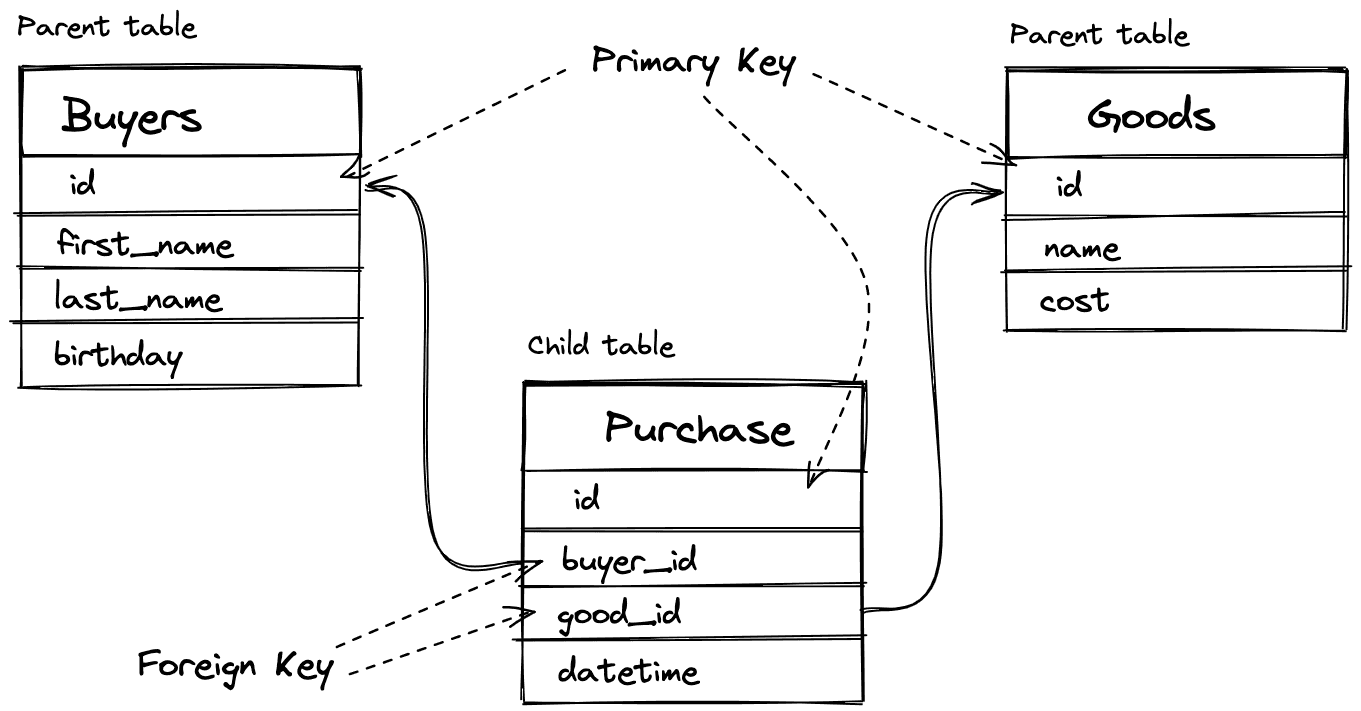Structure of Relational Databases
We have briefly introduced ourselves to relational databases in the previous article. But a superficial understanding is not enough for us, is it? Let's go beyond the surface and delve deeper into the structure and terminology of relational databases.
Table Structure
In relational databases, information is stored in tables linked to each other. The tables themselves consist of:
- rows, which are called "records"
- columns, which are called "fields" or "attributes"

In each table, each column has a predetermined data type. For example, these types can be:
- VARCHAR (string data type)
- INTEGER (numeric data type)
- DATETIME (date and time data type)
- and others
And each row in the table must have the corresponding type for each column. The DBMS will not allow an attempt to add an arbitrary string to a field with the DATETIME type.
To find out the data types of the attributes, you can execute the SQL command DESCRIBE and specify the table name:
MySQL 8.1DESCRIBE FamilyMembers
Alternatively, you can look at the ERD diagram of the database schema:
Primary Key
Any database management system has a built-in system of data integrity and consistency. This system works on a set of rules defined in the database schema. Primary keys and foreign keys are just some of these rules.
To avoid ambiguity in searching tables, there are primary keys, or "key fields".
A key field (primary key) is a field (or set of fields) whose value uniquely identifies a record in the table.
If we refer to our aforementioned table, FamilyMembers, then its key field is member_id. Using this rule, the DBMS will not allow us to create a new record where the member_id field is not unique.
It is worth noting that the presence of a primary key is not necessary, and data integrity can be determined, for example, at the application level.
Foreign Key
A foreign key is a field (or set of fields) in one table that refers to the primary key in another table.
The table with the foreign key is called the child table, and the table with the primary key is called the referenced or parent table.
The foreign key rule guarantees that when creating records in the child table, the value of the field that is the foreign key exists in the parent table.

The presence of a foreign key is the same optional requirement as in the case of a primary key.
If the foreign key is not defined, the database management system will still work, but it will not verify that, for example, when creating a record in the Purchase table, the buyer_id and good_id fields contain values that are defined in the corresponding tables in the id field.
Which of the following statements is false regarding keys in relational databases?